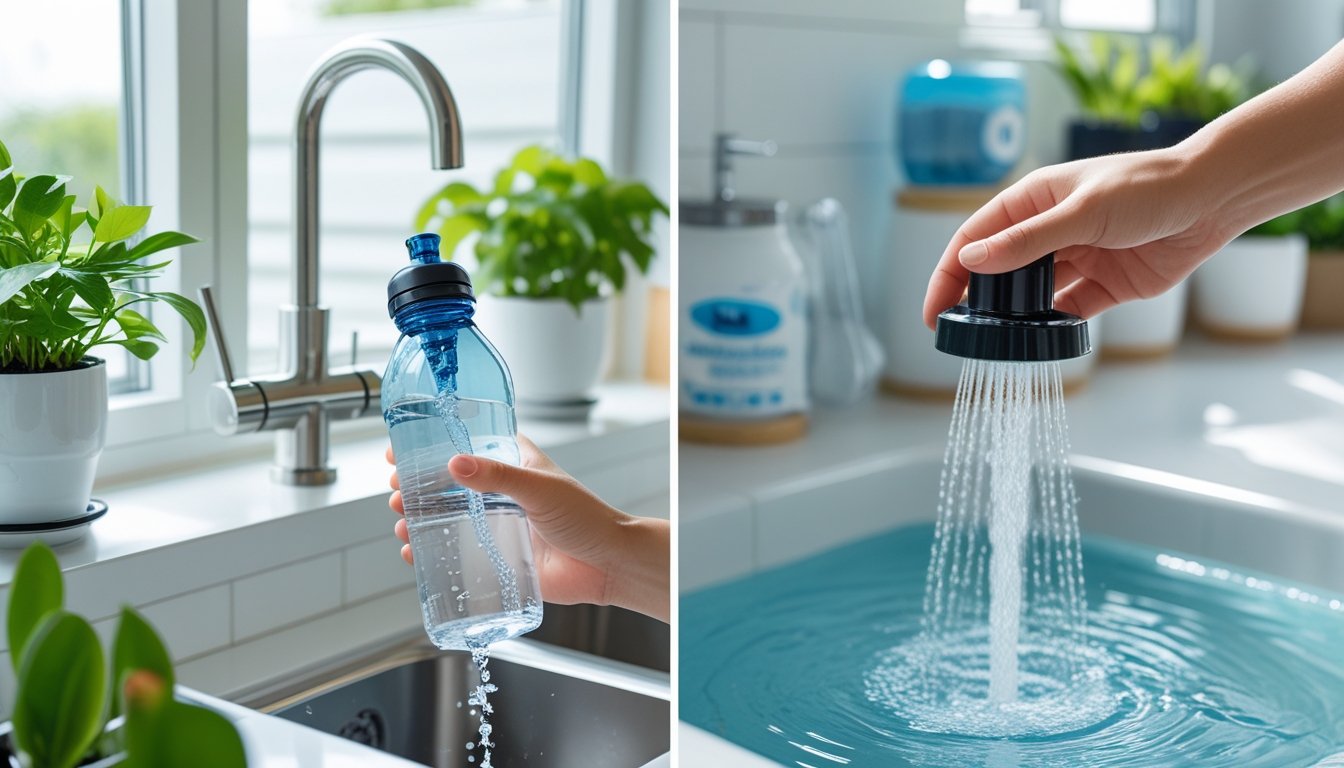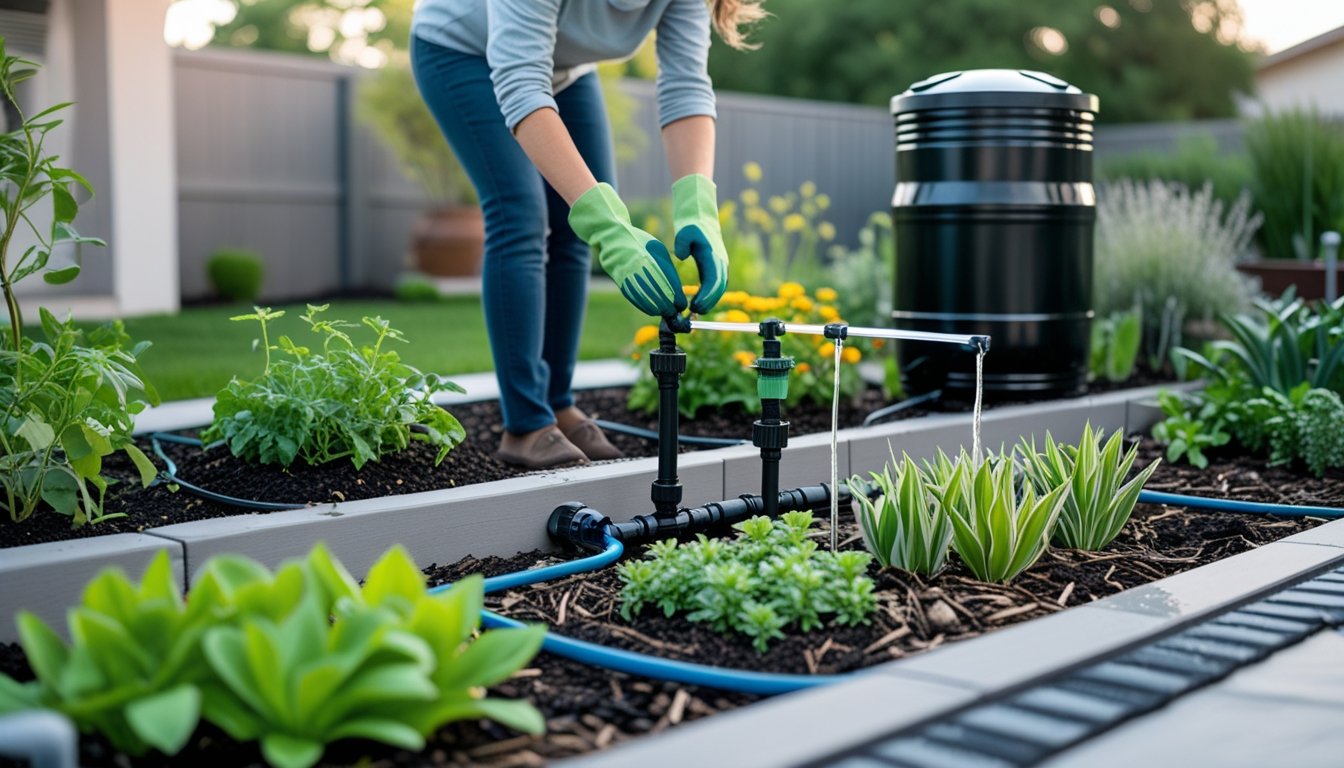Late updated: 03 Jun 2025 14:06
Written by: Sarah Hollister
Eco-Friendly Tips For Reducing Home Water Usage: Simple Changes for Big Savings
In our homes, water may seem like an endless resource, but using it wisely is crucial for both the environment and our wallets. By adopting eco-friendly practices, we can make a significant impact on reducing our water consumption without sacrificing comfort. Whether it's adjusting daily habits or implementing smart upgrades, conserving water can be both simple and rewarding.

We explore how small changes such as taking shorter showers or ensuring our washing machines operate only when full can lead to substantial savings. Beyond the inside of our homes, there are also effective strategies to manage water use outdoors, which are often overlooked.
By integrating these environmentally conscious tips into our daily lives, we contribute to a sustainable future while enjoying the benefits of lower water bills. Let's delve into these practical tips and discover how small shifts can lead to big returns for the planet.
Key Takeaways
- Reducing water use at home is essential for sustainability.
- Implementing outdoor water conservation saves resources.
- Simple changes can lead to significant water savings.
Essential Eco-Friendly Tips For Reducing Home Water Usage
Applying eco-friendly methods to reduce water usage at home can not only save water but also lower utility bills. By identifying leaks, optimising bathroom water use, and adopting kitchen and laundry conservation habits, we can take effective steps towards water efficiency.
Identifying And Fixing Leaks
Leaks can be a significant contributor to water wastage. Dripping taps, leaking toilets, and faulty plumbing can waste gallons of water every day. To conserve water, it’s crucial to inspect and repair leaks promptly.
We should regularly check all faucets and connections. One simple method is to observe the water meter before and after a two-hour window of no water use. Any change could indicate a leak.
Leaking toilets are also major culprits. A worn out flapper is often the cause. Replacing it can prevent litres of water from being wasted every day. Resources like guides or DIY videos can help us tackle most common leak issues with ease.
Optimising Bathroom Water Use
Our bathrooms are hotspots for water use, making them key targets for water-saving efforts. Installing WaterSense-labelled fixtures,
such as low-flow showerheads and dual-flush toilets, considerably reduces water usage without compromising on performance.
Shorter showers are another effective measure. Even a minute less under the shower can save a substantial amount of water. We can also consider installing a shower timer to keep track of time.
Switching to WaterSense taps can improve water efficiency. These reduce flow rates while maintaining adequate pressure. Small changes in habits, like turning off the tap while brushing teeth, make a big difference over time.
Kitchen And Laundry Water Conservation
In the kitchen, installing a WaterSense aerator on the tap can cut down water flow to less than a gallon per minute. This is an inexpensive method to improve water efficiency. When washing dishes, it's also more efficient to use a dishwasher, especially an ENERGY STAR rated model, as they use less water than handwashing.
For laundry, washing only full loads saves precious litres. Energy-efficient washing machines not only reduce water usage but also lower energy bills. Using eco-friendly detergents helps minimise water pollution and often requires less water for rinsing.
Adopting these practices in our daily routines, we ensure a more sustainable approach to water usage at home.
Outdoor Water Conservation Strategies

Maximising water efficiency outdoors is crucial for conserving this precious resource. We can significantly cut our usage by adopting smart irrigation methods and choosing drought-resistant plants. Monitoring water consumption helps in reducing bills and lowering our carbon footprint.
Sustainable Garden Irrigation Practices
Using efficient irrigation techniques can greatly reduce water waste. Drip irrigation systems deliver water directly to plant roots, minimising evaporation. By targeting only necessary areas, we conserve water and ensure optimal plant health.
Mulching around plants also helps retain soil moisture and reduce run-off. It's essential to water early in the morning or late evening to decrease evaporation rates.
Collecting rainwater for garden use is effective too. Simple rainwater harvesting systems can supplement traditional watering methods, providing a sustainable approach to garden maintenance.
Adapting To Drought Conditions And Water Shortages
We should choose drought-resistant plants that are native to our environment as they require less water and adapt well to local conditions. This choice conserves water and decreases the need for frequent watering.
Xeriscaping, the practice of landscaping with minimal water use, involves selecting ground covers and ornamental plants best suited for dry conditions. It not only saves water but also reduces our carbon footprint through less maintenance, like mowing or fertilising.
During droughts, observing local watering restrictions is crucial. Temporary adaptations, like using greywater from sinks, can help maintain gardens without excessive water use.
Monitoring Usage And Reducing Bills
To effectively manage water usage, implementing a water usage calculator can give us an insight into consumption patterns. This tool helps in setting conservation goals and identifying areas needing improvement.
A smart irrigation controller can adjust watering schedules based on weather forecasts and soil moisture levels. This automated system optimises water use efficiently without manual adjustments.
Closely monitoring our water bill provides feedback on the steps we take. By correcting inefficiencies and adopting conservation strategies, we achieve noticeable water savings and cost reductions.
Frequently Asked Questions

In this section, we explore practical strategies to conserve water in our homes. These methods are designed to optimise water usage and promote sustainable living.
What are effective methods for conserving water in residential areas?
Installing water-efficient products like WaterSense-labelled fixtures can significantly reduce water consumption. Adopting eco-friendly plumbing solutions such as tankless water heaters and low-flow tap aerators also contributes to minimising water waste and reducing utility bills.
Can you name five simple practices to decrease water usage in domestic settings?
Firstly, repairing leaks promptly prevents unnecessary waste. Secondly, using a broom instead of a hose to clean driveways saves water. Thirdly, collecting rainwater for garden use is effective. Fourthly, running dishwashers and washing machines only when full is a great tip. Lastly, limiting shower duration helps conserve water.
What strategies can households implement to sustainably manage water resources?
Households can invest in dual-flush toilets and smart sprinklers to manage water wisely. By scheduling lawn watering during cooler times of the day, evaporation loss is minimised. Educating family members about conscientious water habits reinforces a collective commitment to sustainability.
In what ways can individuals contribute to water preservation on a daily basis?
We can adjust tap habits by turning off water while brushing our teeth. Shortening shower times and reducing water used in garden maintenance are other positive steps. Raising awareness through community initiatives also has a lasting impact on water conservation.
Could you provide some water conservation techniques that are easy to integrate into everyday life?
Using a low-flow showerhead, installing faucet aerators, and choosing water-efficient appliances form a strong foundation for everyday conservation. These simple adjustments require minimal effort yet greatly improve our household water efficiency.
What are the most impactful actions a homeowner can take to minimise water waste?
Upgrading to WaterSense-certified toilets and fixtures is an impactful initial step for homeowners. In addition, regular plumbing inspections for leaks and investing in high-efficiency appliances solidify long-term conservation efforts. These measures lead to reduced water bills and a smaller environmental footprint.
